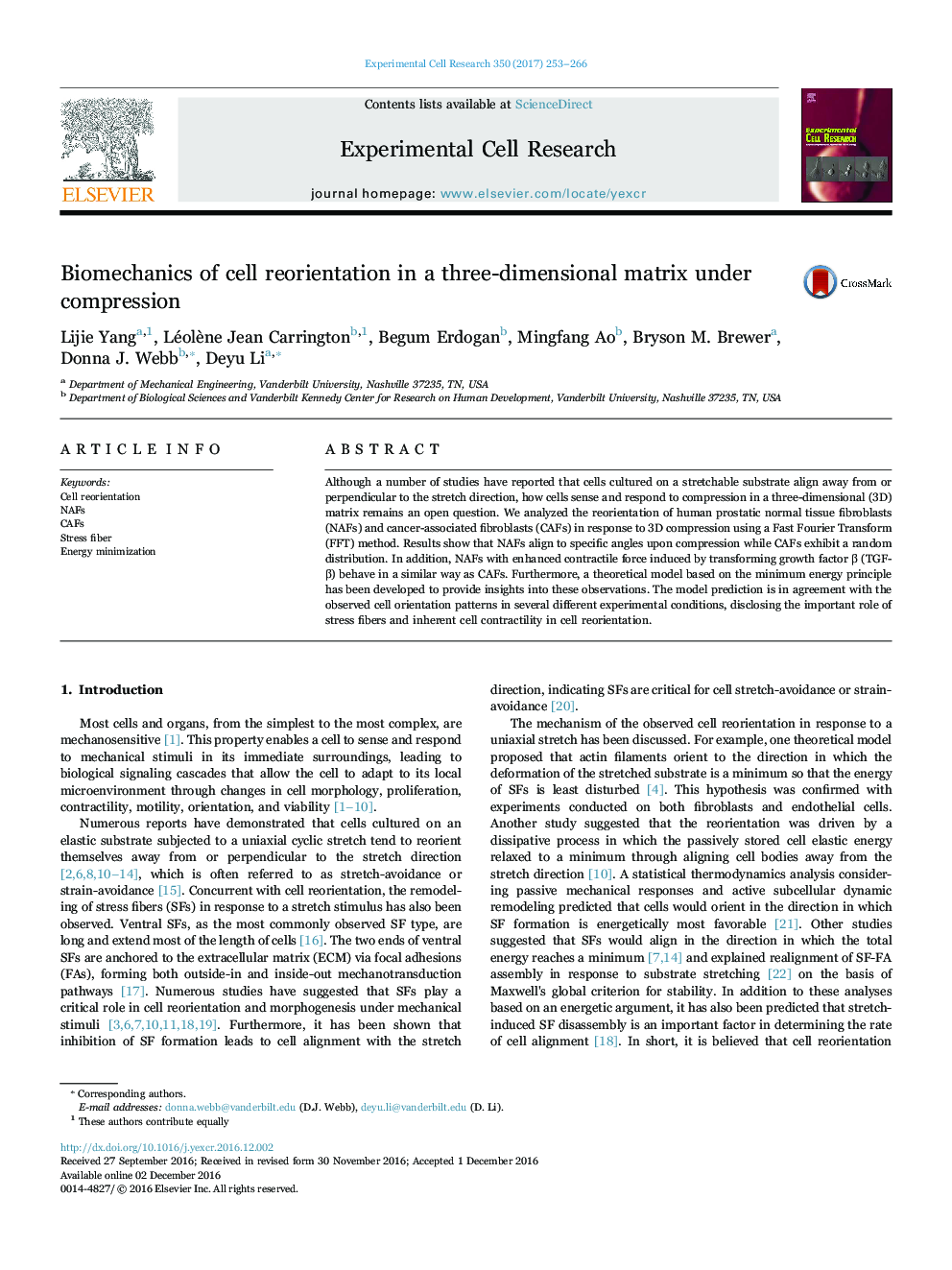| کد مقاله | کد نشریه | سال انتشار | مقاله انگلیسی | نسخه تمام متن |
|---|---|---|---|---|
| 5527307 | 1401576 | 2017 | 14 صفحه PDF | دانلود رایگان |
- NAFs and CAFs show very different reorientation upon compression in 3D.
- NAFs treated with TGF-β and of high contractility behave like CAFs.
- The difference between NAFs and CAFs is due to different cell contractility.
- A theoretical model based on minimum energy principle is established.
- The model results correctly predict the behavior of NAFs and CAFs.
Although a number of studies have reported that cells cultured on a stretchable substrate align away from or perpendicular to the stretch direction, how cells sense and respond to compression in a three-dimensional (3D) matrix remains an open question. We analyzed the reorientation of human prostatic normal tissue fibroblasts (NAFs) and cancer-associated fibroblasts (CAFs) in response to 3D compression using a Fast Fourier Transform (FFT) method. Results show that NAFs align to specific angles upon compression while CAFs exhibit a random distribution. In addition, NAFs with enhanced contractile force induced by transforming growth factor β (TGF-β) behave in a similar way as CAFs. Furthermore, a theoretical model based on the minimum energy principle has been developed to provide insights into these observations. The model prediction is in agreement with the observed cell orientation patterns in several different experimental conditions, disclosing the important role of stress fibers and inherent cell contractility in cell reorientation.
Journal: Experimental Cell Research - Volume 350, Issue 1, 1 January 2017, Pages 253-266
